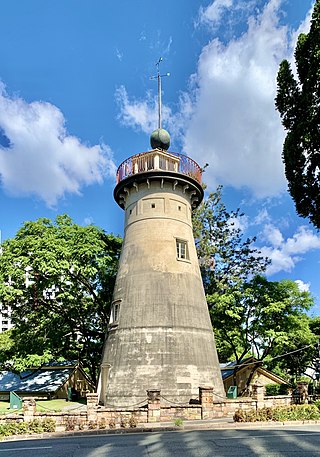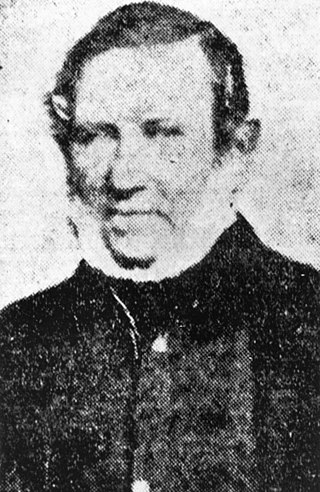Related Research Articles

John Joseph William Molesworth Oxley was an English explorer and surveyor of Australia in the early period of British colonisation. He served as Surveyor General of New South Wales and is perhaps best known for his two expeditions into the interior of New South Wales and his exploration of the Tweed River and the Brisbane River in what is now the state of Queensland.

Captain Patrick Logan was a Scottish army officer who was the commandant of the Moreton Bay Penal Settlement from 1826 until his death in 1830 at the hands of Aboriginal Australians. As he had been hated by convicts, there were rumours that escaped convicts living in the bush had attacked him, but there is no evidence of this.

The Colonial sloop Norfolk was built on Norfolk Island in 1798 of Norfolk Island Pine. She was wrecked in 1800.

The recorded history of Brisbane dates from 1799, when Matthew Flinders explored Moreton Bay on an expedition from Port Jackson, although the region had long been occupied by the Yugara and Turrbal aboriginal tribes. The town was conceived initially as a penal colony for British convicts sent from Sydney. Its suitability for fishing, farming, timbering, and other occupations, however, by 1838, pressure from free settlers led to Brisbane's designation as an area for free settlement in 1842, opening it to non-convict immigrants and beginning its transformation into a commercial and agricultural hub. The town became a municipality in 1859 and a consolidated metropolitan area in 1924. Brisbane encountered major flooding disasters in 1893, 1974, 2011 and 2022. Significant numbers of US troops were stationed in Brisbane during World War II. The city hosted the 1982 Commonwealth Games, World Expo 88, and the 2014 G20 Brisbane summit.

The Old Windmill is a heritage-listed tower mill in Observatory Park adjacent to Wickham Park at 226 Wickham Terrace, Spring Hill, City of Brisbane, Queensland, Australia. It was built in the 1820s by convict labour in the Moreton Bay penal settlement and is the oldest surviving building in Queensland. It is also known as Brisbane Observatory and Windmill Tower. It was added to the Queensland Heritage Register on 21 October 1992. Today it is the centrepiece of Observatory Park and a lookout over parts of the Brisbane CBD.

Robert Harald Lindsay Dixon (1800–1858) was an Australian surveyor and explorer, born in Cockfield, County Durham, England. Dixon is credited with having first surveyed and named a number of areas along the East Coast of Australia.

Logan Village is a semi-rural town and locality in the City of Logan, Queensland, Australia. Logan Village was once known as the head of the navigable Logan River. Its importance as a town grew again when the railway arrived.
The Queensland Times is an online newspaper serving Ipswich and surrounds in Queensland, Australia. The newspaper is owned by News Corp Australia. The circulation of The Queensland Times is 10,804 Monday to Friday and 14,153 on Saturday.

Old Cleveland Road is a major road in Brisbane, Queensland. It runs 19.3 kilometres (12.0 mi) from Stones Corner to Capalaba in Brisbane, with most of the route signed as State Route 22. Sections of the road are also part of State Routes 30, 54, and 55. The road is the main route from inner Brisbane to Capalaba and Cleveland since New Cleveland Road only links Tingalpa with Capalaba.

Robert Cribb (7 January 1805 – 16 April 1893) was an Australian parliamentarian who represented the district of East Moreton in the New South Wales Legislative Assembly, and the districts of Town of Brisbane and East Moreton in the Queensland Legislative Assembly after the separation of Queensland from New South Wales. Cribb's brother Benjamin Cribb also served as a member of the colonial parliaments of both New South Wales and Queensland.

Stapylton is a mixed-use locality in the City of Gold Coast, Queensland, Australia. In the 2021 census, Stapylton had a population of 430 people.
The Chetwynd River, a perennial river of the Glenelg Hopkins catchment, is located in the Western District of Victoria, Australia.

The Early Streets of Brisbane is a heritage-listed archaeological site at sections of Albert Street, George Street, William Street, North Quay, and Queen's Wharf Road in Brisbane City, City of Brisbane, Queensland, Australia. It was built from 1825 onwards. It was added to the Queensland Heritage Register on 16 July 2010.

The Moreton Bay Penal Settlement operated from 1825 to 1842. It became the city of Brisbane, Queensland, Australia.

The First Brisbane Burial Ground is a heritage-listed archaeological site at Skew Street, Brisbane City, City of Brisbane, Queensland, Australia. It is also known as Skew Street Cemetery. It was established in 1825 as part of the Moreton Bay penal settlement. It was added to the Queensland Heritage Register on 16 July 2010.

James Charles Burnett (1815—1854) a.k.a. "John" was a surveyor and explorer in New South Wales, Australia. He was the head of the first Survey Office established at Brisbane in 1844.

Owen Gorman (1799–1862) was a British Army officer and commandant of the Moreton Bay penal colony.
James Warner (1814–1891) was a pioneer surveyor in Queensland, Australia. Arriving at Moreton Bay penal colony in 1838, he was one of three surveyors who surveyed the area now Brisbane and its surrounding areas. He worked for 50 years in the Survey Office of Queensland, surveying and naming many towns and other features.
William Chetwynd, 4th Viscount Chetwynd of Bearhaven was a British Whig politician who sat in the House of Commons from 1747 to 1754.
References
- 1 2 3 Cranfield, Louis R. (1967), "Stapylton, Granville William Chetwynd (1800–1840)", Australian Dictionary of Biography, Canberra: National Centre of Biography, Australian National University, archived from the original on 16 November 2019, retrieved 24 June 2020
- ↑ "LOCAL AND GENERAL NEWS". Queensland Times, Ipswich Herald and General Advertiser . Queensland, Australia. 16 September 1884. p. 3. Retrieved 25 June 2020– via Trove.
- ↑ "Death of an Old Colonist". The Queenslander . Queensland, Australia. 9 May 1891. p. 872. Retrieved 24 June 2020– via Trove.
- ↑ "Murder of Mr. Stapylton by the Blacks at Moreton Bay". The Sydney Gazette and New South Wales Advertiser . New South Wales, Australia. 29 August 1840. p. 2. Retrieved 25 June 2020– via Trove.
- ↑ "Stapylton – locality in City of Gold Coast (entry 46100)". Queensland Place Names. Queensland Government . Retrieved 25 June 2020.
- ↑ "First Surveyors in Queensland". Monument Australia. Archived from the original on 24 June 2020. Retrieved 24 June 2020.